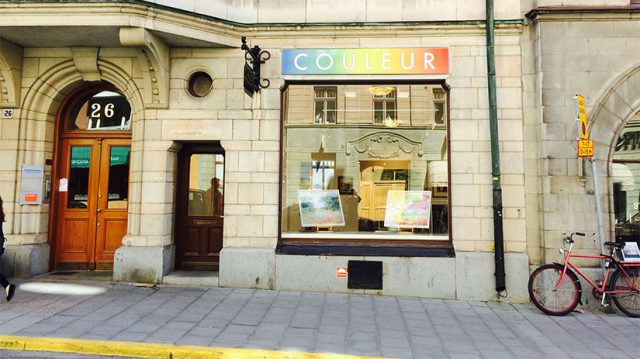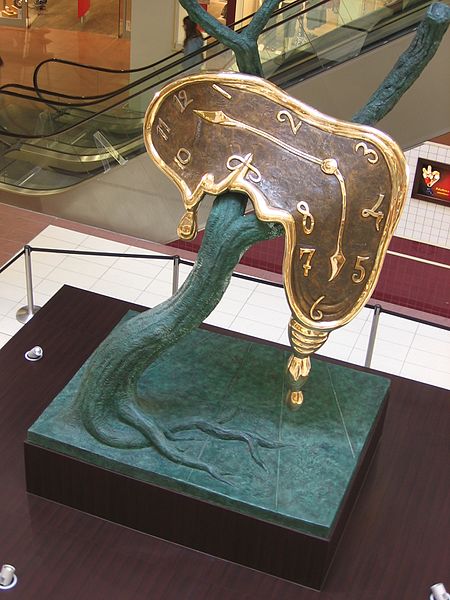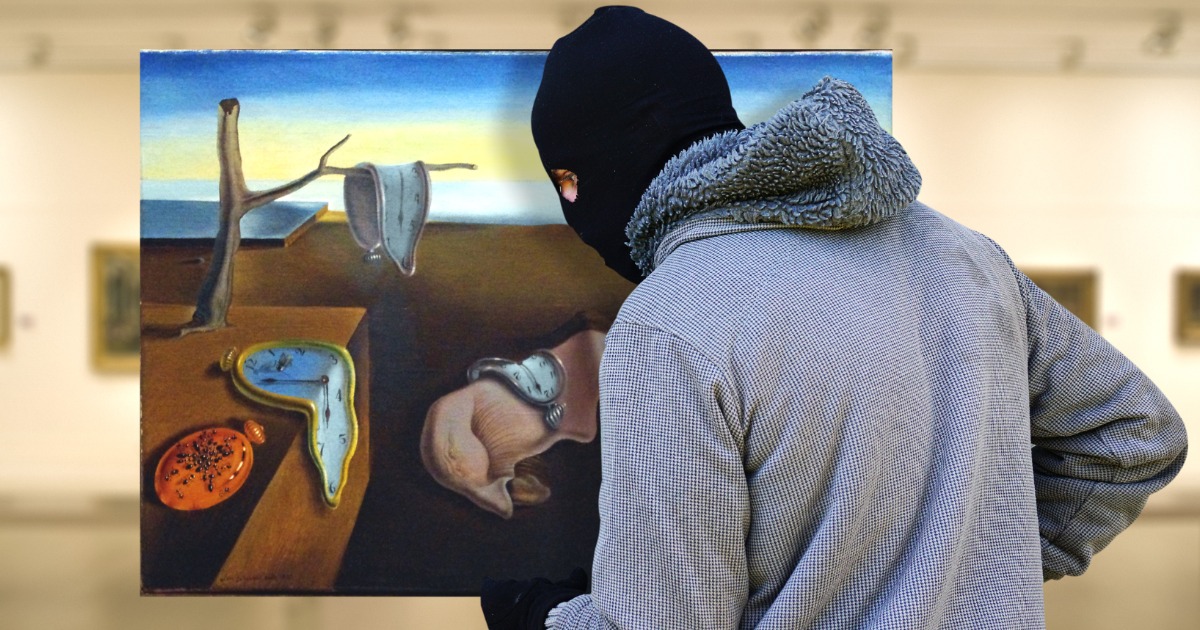A surreal smash and grab theft of valuable Dali sculptures and drawings has taken place at a Swedish art gallery. Why surreal? Because the target was none other than eccentric artist Salvador Dali… or rather his work!
The Couleur gallery in Stockholm was raided by thieves early on Thursday morning. Believed to be at least 2 in number, they smashed the entrance window to get inside. The alarm was triggered after 4am.

Their haul included up to 12 “table-size bronze sculptures” according to the New York Post. Etchings were also stolen. Though Dali is arguably most famous for his painting Persistence of Memory (1931), he employed various mediums.
“The sculptures — including several of Dali’s famous melting clocks on a tree — had been on display at the gallery for 10 days” writes the Post. The exhibition hosted pieces brought in on loan from Switzerland. It was due to close on Saturday, so robbers struck with a couple of days to spare.
Salvador Dalí ”Melting clock” Bronze 1977 (Profile of Time) pic.twitter.com/uaULuZwF2d
— Soniasuponia (@Soniasuponia) August 20, 2014
Gallery owner Peder Enstrom described the sculptures as being up to 50 cm in height, with a maximum price tag of $52,000. In total the bronze pieces could fetch $600,000. Speaking to the TT news agency, he called the crime “terrible”. A forensic examination is currently being conducted by Stockholm police.

In more positive news, a Dali diptych – or painted wooden panels for the layman – titled ‘Couple aux têtes pleines de nuages’ (1937) is taking centre stage at Bonhams’ Impressionist and Modern Art sale. Due to happen in March at London’s famous auction house location, it could fetch $13 million.
Translating as ‘Couple with Their Heads Full of Clouds’, the panels are in the shape of Dali and his wife Gala. Hypebeast reports, “The panels feature a desert landscape filled with the artist’s reoccurring surrealist motifs — scattered rocks, a disfigured tree, a giraffe on fire and indistinct human figures.”
Though famously a Surrealist, Dali went through periods, with the first in 1929. “Created at the height of his Surrealist period, the diptych showcases Dalí’s interest in exploring Freudian psychologies and the unconscious mind,” says Hypebeast. It adds, “Like many of his significant works, the painting is signed Gala Salvador Dalí to honor his wife.”

The artist’s eye-popping imagery lived on long after his end in 1989. Persistence of Memory is a cornerstone of his offbeat legacy. “The painting, sometimes called Soft Watches, shows melting pocket watches in a landscape setting,” says Biography.com. The melting watch recurs in this week’s stolen pieces. As for what it means, that’s open to interpretation but “It is said that the painting conveys several ideas within the image, chiefly that time is not rigid and everything is destructible.”

The site notes, “Dalí was an avid reader of Sigmund Freud’s psychoanalytic theories”. The subconscious played a vital role in his Surrealist works. He employed the “‘paranoiac-critical method,’ a mental exercise of accessing the subconscious to enhance artistic creativity.” He sought to “create a reality from his dreams and subconscious thoughts, thus mentally changing reality to what he wanted it to be and not necessarily what it was.”
https://www.youtube.com/watch?v=PoNt-gJTxAs
Dali also explored filmmaking. The notorious Un Chien andalou with its sequence of an eyeball being sliced was one way he impacted on the cinema screen. Alfred Hitchcock used Dali’s paintings in 1945’s Spellbound. And Dali nearly appeared in front of the camera for a movie adaptation of Dune by director Alejandro Jodorowsky. The infamously troubled project was abandoned.
Related Story: $26 Million Picasso Painting Vandalized in London Devastates Art World
Away from the inner self, Dali’s exterior was visually striking. Some argue his eccentricity in the wardrobe department rivalled if not exceeded what he splashed on the canvas. His very long moustache and cape were maybe par for the course when it came to artists. However, “At a ball held in his honor, Dalí, in characteristic flamboyant style, appeared wearing a glass case across his chest which contained a brassiere.”
